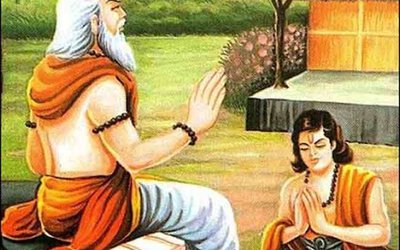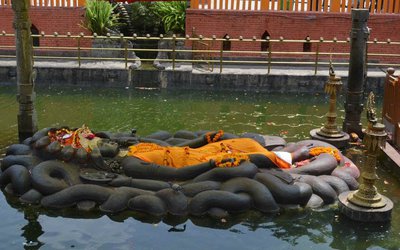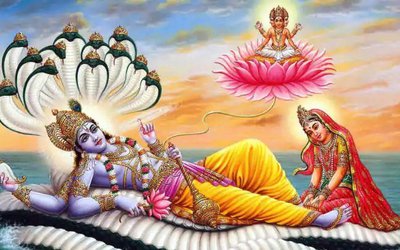
Maghe Sankranti or Makar Sankranti is being celebrated throughout Nepal and India. This is one of the highly importance festival of Hindus. In Nepal and India, devotees take a dip in the river bank before the rise of sun.
However, it is observed by taking holy dips in rivers and ponds, worshiping at various temples and savoring delicacies like ghee, yam, khichadi and sweets like Chaku and sweets made of sesame and molasses.
Maghe Sankranti or Makar Sankranti is being celebrated throughout the country today. It is observed by taking holy dips in rivers and ponds, worshiping at various temples and savoring delicacies like ghee, yam, khichadi and sweets like Chaku and sweets made of sesame and molasses.
As per astrological chart, the Makar Sankranti has special significance- this day onwards the sun starts its ascendancy and enters into the northern hemisphere.
On this day, the sunlight moves from the tropic of Capricorn towards the tropic of Cancer. It is believed that the days get longer and nights shorter from today itself. According to ‘Bhabisya Puran’ and ‘Dharma Sindhu’, religious texts, devotees will get special blessings and will have a robust body if they observe the festival as per the rituals.
The Newar community observes the festival by taking ghee, Chaku and remembering the departed souls. This festival is called ‘Ghyo Chaku Sallnhu’. The seniors apply mild-hot edible oil to the heads of juniors on this day.
A large number of devotees throng Devghat, Barahchhetra, Ridi, Panauti, Dolalghat and Kankai in Nepal and Prayag and Gangasagar in India to take a holy bath and perform Shraddha.
The festival has significance in view of Ayurveda and medical science as well. Food items that are taken on this day are the sources of a balanced diet which increases the immunity power of the human body. On this day, a festival is organized at the Tilmadhav Narayan Temple at Taumadhi Tole, Bhaktapur and puja of Deepakankar Buddha is performed.
The Tharu community and Magar community observe this festival as the Maghi with much fanfare and gaiety. Likewise, the people in the Terai districts mark this day as the festival of bath known as Nahan.The government has announced public holiday on the occasion of Maghe Sankranti/Maghi festival.
Makar Sankranti, an ancient Hindu festival, is set to be celebrated on Monday (January 15, 2024), marking the transition of Sun into the zodiac sign of Capricorn (known as Makara in Sanskrit). This auspicious occasion, synonymous with harvest, kite-flying, and cultural festivities, resonates with vibrant traditions that vary across India. The year's first festival is celebrated around mid-January and the date is based on the solar calendar. In 2024, the Sun will move from Sagittarius to Capricorn two hours past midnight (2.45am to be exact) on January 14, which is why Makar Sankranti will be celebrated on January 15. This astronomical event has been celebrated for centuries, dating back to Vedic times.
Symbolism and spiritual significance
Beyond its astronomical roots, Makar Sankranti carries profound spiritual significance. The shift of the Sun symbolises a journey toward enlightenment and spiritual awakening. Devotees view this transition as an opportune moment to rid themselves of negativity, embracing positivity and divine blessings.
Harvest celebrations
Makar Sankranti is also known as the harvest festival. The festival marks the end of chilly winter, heralding longer days and the onset of the harvest season. The celebration is extra special in the farming communities, as this is the time when they reap the fruits or their hard labour.
Popular foods on Makar Sankranti
Til and Jaggery delicacies: Makar Sankranti is synonymous with a delectable array of til (sesame seeds) and jaggery-based treats. Traditional foods are til chikkis to melt-in-your-mouth til ladoos - bite-sized balls with warming sesame seeds and jaggery.
In the southern states, particularly Tamil Nadu, Makar Sankranti is celebrated as Pongal. This unique celebration spans four days, with each day dedicated to distinct culinary delights. The most important dish of the festival is Pongal, which is made with newly harvested rice, lentils and jaggery.
Puran Poli: This is a popular dish associated with Makar Sankranti in Maharashtra. It is a sweet flatbread filled with a delightful mixture of sweet and crumbly moong that is served for breakfast. Maharashtrians also prepare the dish on Diwali.
Dal Khichdi: Makar Sankranti is a harvest festival, so people use newly harvested rice and dal (lentils) to make khichdi. This is a popular food because it is light and easily digested.
Makar Sankranti is a time for shared meals and communal feasts. Families and communities come together to share their food, strengthening social bonds over pots of khichdi, gajak and regional specialties. The act of sharing food becomes a celebration of abundance and a reminder of the importance of togetherness.
Rituals that define Makar Sankranti
Sacred dips: A significant aspect of Makar Sankranti involves devotees taking ritualistic dips in sacred rivers, symbolising the cleansing of sins. The Ganges, Yamuna, and other revered water bodies witness a surge of pilgrims seeking "spiritual purification". The act of immersing oneself in cold waters becomes an embodiment of devotion.
Flying kites: The sky becomes a "battleground" during Makar Sankranti as kite enthusiasts engage in fierce competitions. The tradition is popular in cities like Ahmedabad and Jaipur where colorful kites dance in the air. This tradition not only showcases skill and precision but also reflects the spirit of friendly competition and celebration.
Rangoli artistry: Homes come alive with intricate rangoli designs during Makar Sankranti. A riot of colours and patterns adorns doorsteps and becomes a visual celebration of creativity and cultural heritage.
Folk performances: The beats of dholaks, the twirls of traditional dancers and the vibrant energy of folk performances add a rhythmic touch to Makar Sankranti celebrations. Bihu in Assam, Lohri in Punjab, and other regional festivities amplify the cultural diversity that defines the festival.
Environmental consciousness
Sustainable celebrations: In recent years, there has been a growing awareness of the environmental impact of festivals. Makar Sankranti enthusiasts are increasingly adopting eco-friendly kite materials and biodegradable threads to reduce the festival's ecological footprint. This shift towards sustainable celebrations reflects a collective effort to balance tradition with environmental responsibility.
Conservation initiatives: Some regions have incorporated environmental conservation into their Makar Sankranti celebrations. Plantation drives, cleanliness campaigns, and awareness programs highlight the importance of preserving the natural resources that sustain agriculture, a central theme of the festival.
Other names of Makar Sankranti
The festival is celebrated in large parts of the country around the same time. It is known as Pedda Panduga or Makara Sankranti in Andhra Pradesh, Makara Sankranti in Karnataka, Telangana and Maharashtra, Pongal in Tamil Nadu, Magh Bihu in Assam, Makara Chaula in Odisha, Til Sakraat or Dahi Chura in Bihar, Makaravilakku in Kerala, Poush Sankranti in West Bengal, Magha Saaji in Himachal Pradesh, Haldi Kumkum in Maharashtra and Maghi Sankrant in Goa.
Makar Sankranti takes place right after Lohri in Punjab, another harvest festival.
Bank holiday on Makar Sankranti
It is the first big festival of the year, and banks are closed in several states, according to RBI calendar. Makar Sankranti is celebrated as Uttarayana Punyakala, Maghe Sankranti, Pongal and Magh Bihu so banks will be closed in Karnataka, Odisha, Tamil Nadu, Andhra Pradesh, Telangana, Sikkim and Assam.
Makar Sankranti on social media
Makar Sankranti trends on social media platforms, with users sharing their experiences, culinary creations, and vibrant attire. Hashtags like #MakarSankranti and #KiteFestival amplify the festival's reach, creating a virtual space where the global community converges to celebrate the rich tapestry of Indian culture.
People also organise virtual events and live stream kite-flying competitions, along with other online cultural programs that allow people from around the world to participate in the festivities. This digital transformation enhances the inclusivity of the festival.
- REEEP-GREEN's technical support is invaluable in the process of preparing the MEP: Mayor Bimala Rai
- Jul 10, 2025
- Birendra Raj Pandey Elected President of the Confederation of Nepalese Industries (CNI)
- Jul 10, 2025
- Ujyalo Foundation organized the One-Day Feminist Conference (OFC) 2025
- Jul 10, 2025
- JICA extends scholarship for Governmental officials through Grant Assistance in The Project for Human Resource Development Scholarship (JDS)
- Jul 10, 2025
- Spain’s Academia de la Diplomacia and Nepal’s The Diplomat Nepal Join Hands
- Jul 10, 2025















